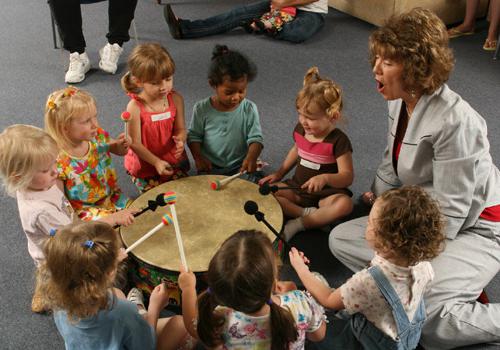Math in kindergarten is not only a score of up to ten and vice versa. A math lesson in the preparatory group implies the development of mathematical and logical skills for each child. In the future, this base of skills will be fundamental in school education, where it is important not only to count, but also to build causal relationships. Therefore, in the DOE in mathematical classes more attention is paid to logical problems.
What logical thinking does mathematics include?
For the preparatory group, the lesson should be structured in such a way as to develop logical methods or mental operations in the child : synthesis, classification, abstraction, analogy, serialization, generalization, comparison, construction, analysis.
Tasks for analysis make the child distinguish one object from a group of objects. For example, find fruit from vegetables or collect only sour fruits. The child needs to analyze the properties of each subject and select one or more according to specific conditions.
Synthesis problems require combining different characters into a single whole. For example, the traditional lesson in mathematics in the preparatory group for synthesizing is the search for balls from all objects, then you need to select only red balls, then collect balls only not red. Tasks for the development of analysis and synthesis are similar to each other.
Serial exercises require the child to line up in ascending or descending order. If in the younger group such tasks involve the construction of pyramids, fir-trees or nesting dolls, then in the preparatory group children can work with numbers, figures, sticks.
Comparison, construction, classification, generalization
Particular attention is paid to the development of comparative ability, so that the child can highlight the same and different signs of each subject. In the preparatory group, this may be the task of highlighting objects by 2-3 signs or searching for numerous descriptive adjectives of any subject (watermelon-sun, ribbon-snake).
By design, a lesson in mathematics in the preparatory group is also held at least 2 times a week. Each time, children receive tasks with complicated conditions. For example, in the first lesson, children did according to the example of the teacher, in the second task - from memory, the third time - from the drawing, and at the last stage the verbal general task “fold the cat” is given.

Classification and generalization are essentially the same as analysis and synthesis. Only in the first case, it is necessary to divide objects into groups, and when generalizing it is necessary to find similar signs in objects. For example, classification tasks include searching for objects by name, shape, size, color, or by several criteria (red buttons in a round container, and green beads in a square box). In this case, the teacher can name the difference between the subjects or give an indefinite task: “Find what is common between the subjects” or “Divide the triangles into two groups”, and the child searches for signs himself.
Many preschoolers perform any math lesson in the preparatory group perfectly, but at the same time they cannot generalize the result of the work done. Therefore, it is important to ask after each task: “Why does this subject lie in this group, and not in that”? Such questions contribute to the development of a causal relationship, the child to learn to reason, build logical conclusions.
What mathematical knowledge should senior preschool children master?
- Children must count to ten and vice versa with any digit.
- Preschoolers should know what numbers from zero to ten look like.
- Within ten, children should quickly name the "neighbors" of any number.
- Children should understand the meaning of signs: plus, minus, more, less, equal.
- Children should compare numbers within 10 (which is greater, which is less, the same).
- Preschoolers must find geometric shapes: triangle, rectangle, square, circle.
- Children must relate the picture (number of items) to the number.
- Children should group objects according to a specific attribute.
- Children should compare objects by size, color, shape.
- Children must solve problems in one action on subtraction and addition.
- Children should understand terms such as “later,” “earlier,” “right,” “up,” “left,” “down,” “before,” “between,” “for,” and so on.
These are approximate mathematical ZUNs that preschoolers should master. Each specific DOW has its own program, which determines what mathematics will be. The preparatory group (class notes are written in detail) requires more demonstration material and interesting logical tasks.
Children are not interested in solving subtraction and addition examples. They need to save fairy-tale heroes by solving the tasks of the villains. Therefore, the teacher needs to carefully prepare for the lesson by writing down the program content, preliminary work, teaching methods, demonstration and handout material, structure and course of the lesson with direct speech and possible answers from children.